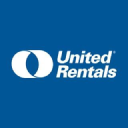/ factorpad.com / stocks / f77bkt.html
An ad-free and cookie-free website.
Our quantitative data points are meant to provide a high-level understanding of factors in equity risk models for United Rentals Inc. Portfolio managers use these models to forecast risk, optimize portfolios and review performance.
We show how URI stock compares to 2,000+ US-based stocks, and to peers in the Real Estate and Rental and Leasing sector and General Rental Centers industry.
Please do not consider this data as investment advice. Data is downloaded from sources we deem reliable, but errors may occur.
 United Rentals, Inc. is the largest equipment rental company in the world. The company has an integrated network of 1,169 rental locations in North America and 11 in Europe. In North America, the company operates in 49 states and every Canadian province. The company's approximately 18,900 employees serve construction and industrial customers, utilities, municipalities, homeowners and others. The company offers approximately 4,000 classes of equipment for rent with a total original cost of $14.13 billion. United Rentals is a member of the Standard & Poor's 500 Index, the Barron's 400 Index and the Russell 3000 Index® and is headquartered in Stamford, Conn.
United Rentals, Inc. is the largest equipment rental company in the world. The company has an integrated network of 1,169 rental locations in North America and 11 in Europe. In North America, the company operates in 49 states and every Canadian province. The company's approximately 18,900 employees serve construction and industrial customers, utilities, municipalities, homeowners and others. The company offers approximately 4,000 classes of equipment for rent with a total original cost of $14.13 billion. United Rentals is a member of the Standard & Poor's 500 Index, the Barron's 400 Index and the Russell 3000 Index® and is headquartered in Stamford, Conn.
Many of the following risk metrics are standardized and transformed into quantitative factors in institutional-level risk models.
Rankings below represent percentiles from 1 to 100, with 1 being the lowest rating of risk.
Stocks with higher beta exhibit higher sensitivity to the ups and downs in the market. (↑↑)
Stocks with higher market capitalization often have lower risk. (↑↓)
Higher average daily dollar volume over the past 30 days implies lower liquidity risk. (↑↓)
Higher price momentum stocks, aka recent winners, equate to lower risk for many investors. (↑↓)
Style risk factors often include measures of profitability and payout levels.
Companies with higher earnings generally provide lower risk. (↑↓)
Companies with higher dividend yields, if sustaintable, are perceived to have lower risk. (↑↓)
/ factorpad.com / stocks / f77bkt.html
A newly-updated free resource. Connect and refer a friend today.